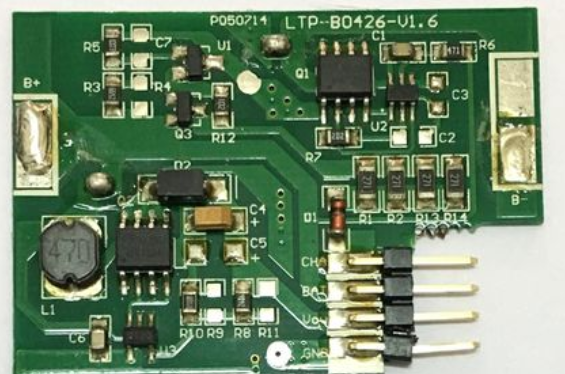Our common computer boards are basically double-sided PCB printed circuit boards based on epoxy glass cloth. One side is for inserting components and the other side is for component pin soldering. It can be seen that the solder joints are very regular. The discrete soldering surface of the component pin is called a pad. Why are other copper wire patterns not tinned? Because in addition to the soldering pads and other parts, the surface of the remaining parts has a solder mask that is resistant to wave soldering. Most of the solder mask on the surface is green, and a few use yellow, black, blue, etc., so solder mask oil is often called green oil in the PCB industry. Its function is to prevent bridging phenomenon during wave soldering, improve soldering quality and save solder. It is also a permanent protective layer for printed boards, which can prevent moisture, corrosion, mildew and mechanical scratches. From the outside, the smooth and bright green solder mask is a green oil that is photosensitive and thermally cured for the film on the board. Not only the appearance is better, but more importantly, the precision of the pads is higher, which improves the reliability of the solder joints.

We can see from the computer board that there are three ways to install components. A plug-in installation process for transmission, in which electronic components are inserted into the through holes of the printed circuit board. In this way, it is easy to see that the through holes of double-sided printed circuit boards are as follows: one is a simple component insertion hole; the other is a component insertion and double-sided interconnection through hole; the third is a simple double-sided conduction Through holes; the fourth is the substrate mounting and positioning holes. The other two mounting methods are surface mounting and direct chip mounting. In fact, the direct chip mounting technology can be regarded as a branch of the surface mounting technology. It is to directly stick the chip on the printed board, and then use the wire bonding method or carrier tape method, flip chip method, beam lead method and other packaging technologies to interconnect to the printed circuit board. On the board. The welding surface is on the component surface.
Surface mount technology has the following advantages:
1. Because the printed board largely eliminates large vias or buried hole interconnection technology, the wiring density on the printed board is increased, and the printed board area is reduced (usually one third of the plug-in installation). Can reduce the design layer and cost of the printed board.
2. Reduced weight, improved seismic performance, adopted colloidal solder and new welding technology, improved product quality and reliability.
3. As the wiring density is increased and the lead length is shortened, parasitic capacitance and parasitic inductance are reduced, which is more conducive to improving the electrical parameters of the printed board.
4. It is easier to realize automation than plug-in installation, improving installation speed and labor productivity, and correspondingly reducing assembly costs.
It can be seen from the above surface mounting technology that the improvement of circuit board technology is improved with the improvement of chip packaging technology and surface mounting technology. The surface adhesion rate of the computer board khaki we are looking at is constantly rising. In fact, this kind of circuit board can't meet the technical requirements by using the screen printing circuit pattern of the transmission. Therefore, for ordinary high-precision circuit boards, the circuit patterns and solder mask patterns are basically made of photosensitive circuits and photosensitive green oil.
With the development trend of PCB high density, the production requirements of circuit boards are getting higher and higher, and more and more new technologies are applied to the production of circuit boards, such as laser technology, photosensitive resin and so on. The above is only a superficial introduction to some surfaces. There are many things in the circuit board production that are not explained due to space limitations, such as blind and buried vias, flexible boards, Teflon boards, photolithography and so on.